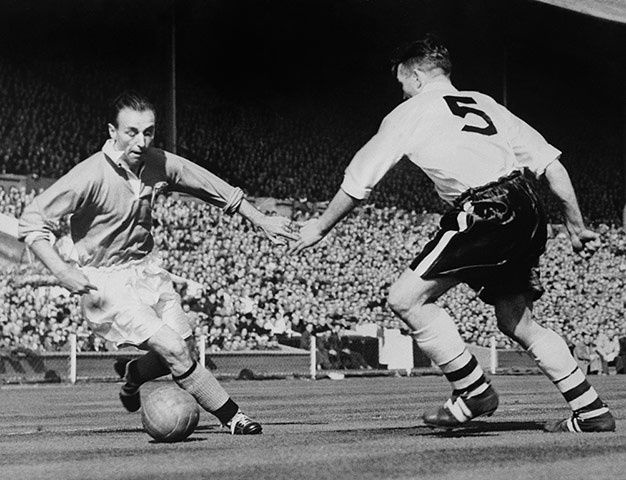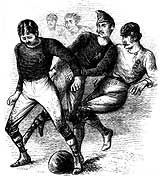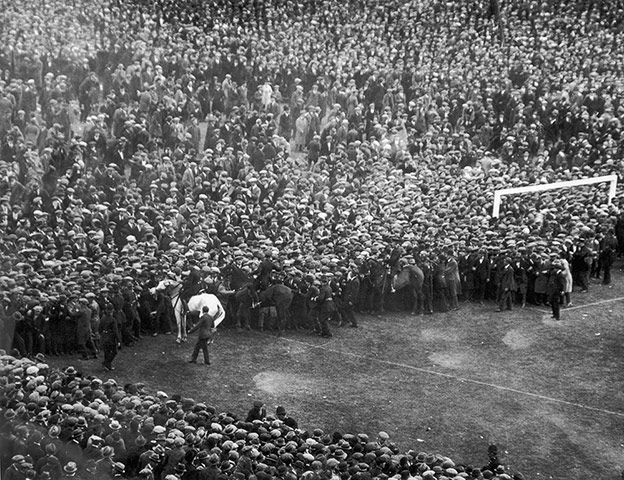Football’s Early Beginnings.
Football (and additionally rugby and soccer) are accepted to have plummeted from the antiquated Greek round of harpaston. Harpaston is specified oftentimes in established writing, where it is regularly alluded to as a "harsh and ruthless diversion". The standards of this antiquated game were truly straightforward: Points were honored when a player would cross an objective line by either kicking the ball, running with it over the objective line, or tossing it over the line to an alternate player. The other group's target was essentially to stop them by any methods conceivable. There was no particular field length, no side line limits, no pointed out number of players every group, just a glaring absence of guidelines.
Most present day adaptations of football are accepted to have started from England in the twelfth century. The diversion got to be so mainstream in England that the rulers of that time (Henry II and Henry IV) really banned football. They accepted that football was taking ceaselessly enthusiasm from the customary games of England, for example, fencing and bows and arrows.

Development and the Beginnings of Standardization
Football didn't generally start to tackle any consistency of principles and limits until it was grabbed as a game in the seven noteworthy state funded schools of England in the early 1800's. Six of the seven schools were generally playing the same amusement (counting Eton, Harrow and Winchester) - while the seventh, Rugby School (established in 1567) was playing an uniquely diverse variant of football.
Alternate schools advanced ahead refining their guidelines and in the long run their amusement got to be known as "affiliation football" – or soccer, which was played in those days much as it is today.

Rugby School went in an alternate bearing. How and why the diversion created distinctively at Rugby School seems to have been lost ever, however what is known is that by the 1830's, running with the ball at Rugby School was in like manner utilization and 18 foot objective posts had been included with a cross-bar at 10 feet over the ground.
The incorporation of the cross-bar was joined by a decide that an objective could just be scored by the ball disregarding the bar from a spot kick or drop kick. Obviously this was carried out to make scoring simpler from farther furthermore to evade the crowd of protectors remaining in and hindering the mouth of the objective.
Players who had the capacity "touch down" the ball behind the rivals objective line were recompensed an "attempt at-objective" - the player would make an imprint on the objective line and afterward stroll back onto the field of play to a point where a spot kick at the objective was conceivable (a change). There was likewise an "off-your-side" standard used to keep the groups separated. Passing the ball forward was not permitted.

By the mid-1860s British schools and colleges had taken up Rugby's diversion and respected the school by giving the "new football" the name of rugby.
The diversion soon went trans-Atlantic to America and arrived on ripe soil.

Bases of American Football
The conception date of football in the United States is for the most part viewed by football history specialists as November 6, 1869, when groups from Rutgers and Princeton Universities met for the first intercollegiate football game. In those early diversions, there were 20 players to a group football still more nearly took after rugby than present day football.
The sport of football has a past filled with consistent principle changes. Principle changes have been executed to reinforce the energy of the sport of football and to expand the amusement's wellbeing.
In 1873, delegates from Columbia, Rutgers, Princeton, and Yale Universities met in New York City to detail the first intercollegiate football rules for the undeniably prevalent diversion. These four groups created the Intercollegiate Football Association (IFA) and set 15 as the quantity of players permitted on each one group.
Walter Camp, the mentor at Yale and a nonconformist from the IFA over his craving for an eleven man group, helped start the last venture in the advancement from rugby-style play to the present day session of American football. The IFA's guidelines board, drove by Camp, soon cut the quantity of players from fifteen to eleven, furthermore organized the extent of the playing field, at one hundred ten yards. In 1882 Camp likewise presented the arrangement of downs. After first permitting three endeavors to propel the ball five yards, in 1906 the separation was changed to ten yards. The fourth down was included 1912.
Inside 10 years, concern over the expanding mercilessness of the diversion prompted its boycott by a few universities. Almost 180 players had endured genuine wounds, and eighteen passings had been accounted for from the ruthless mass plays that had ended up regular practice. So in 1905, President Theodore Roosevelt called upon Harvard, Princeton, and Yale to help spare the game from end.
At a gathering between the schools, change was settled upon, and at a second gathering, went to by more than sixty different schools, the gathering designated a seven part Rules Committee and set up what would later get to be known as the National Collegiate Athletic Association, or the NCAA.
From this board of trustees came the sanctioning of the forward pass, which brought about an upgrade of the ball and a more open style of play on the field. The harsh mass plays, which once created such a large number of genuine wounds, were restricted by the council. Additionally disallowed was the locking of arms by colleagues in a push to make room for their ball bearers. The length of the amusement was abbreviated, from seventy to sixty minutes, and the impartial zone, which differentiates the groups by the length of the ball before each one play starts, was additionally settled.




